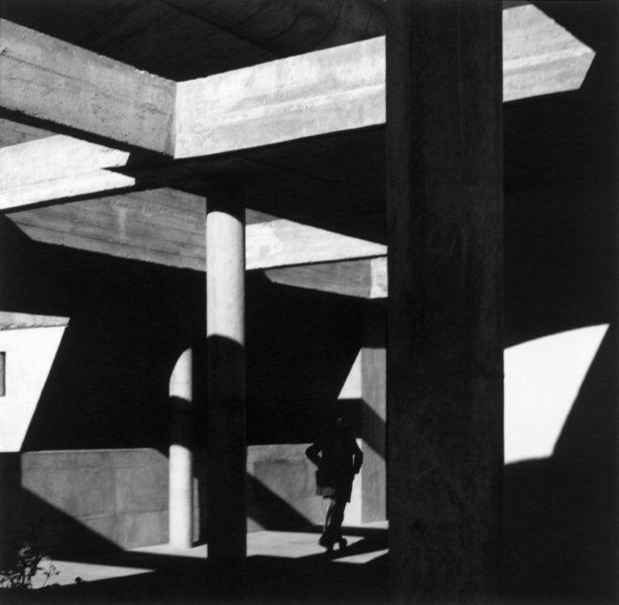Lucien Hervé “Le Corbusier in India”
agnès b. galerie boutique

This event has ended.
agnès b. presents Lucien Hervé: Le Corbusier in India, a photography exhibition of rare signed vintage and modern prints by Lucien Hervé, who has been represented by Galerie du Jour agnès b. Paris since 1993.
Self-taught photographer Lucien Hervé began working with the maverick architect Le Corbusier in 1949. As the “official” Le Corbusier photographer, Hervé documented the architect’s work and projects until Le Corbusier’s death in 1965. Le Corbusier once said, “Not only your remarkable vision of my work makes it more complete, but you have the soul of an architect and know how to look at architecture.”
During the 16 years they worked together, Hervé took thousands of photographs of Le Corbusier’s projects. All of the photographs in this exhibition were taken during two trips to India, one in 1955 and one in 1961. During this time he photographed the Ahmedabad Millowner’s Association Building (1951) and the Villa Shodhan (1951). In Chandigarh, he photographed the High Court of Justice (1952), the Secretariat Building (1952) and the Palace of the Assembly (1955), which Le Corbusier considered his greatest work. Photographing one of the most spectacular “new cities” of the 20th century, Hervé also observed the ongoing construction sites for which he developed a more “humanistic” approach. He recognized how his collaboration with Le Corbusier was critical for his own work, “With Le Corbusier I learned to discern and identify beauty in its nascent form, along with a need for total purity, this notion forced me to work with rigor and precision.”
The exhibition Lucien Hervé: Le Corbusier in India explores these two aspects: the humanistic vision, as well as the architectural dimension. Favoring high and side angle views, a deliberate affinity for abstraction and the use of stark blacks and whites are characteristics of Lucien Hervé’s very personal style. Noted for his sharp sense of framing and formal elegance, Hervé patiently built one of the major photographic œuvre of the 20th century. He has long been celebrated for his exceptional artistry as well as his prolific output.
About Lucien Hervé
Born on August 7, 1910 in Hungary, László Elkán moved to Paris in 1929. First attracted to painting, music and fashion, he started to work as a photographer for Marianne Magazine. Politically active in France, he joined the Conféderation Générale du Travail (CGT) union and the French Communist Party, from which he would be excluded twice, in 1938 and in 1947. Adhering to strong personal convictions, and following his escape from the Hohenstein war prisoners’ camp, he joined the anti-Nazi French Resistance movement in 1941 under the pseudonym Lucien Hervé. He resumed his photography work after the war. Close to the postwar French humanistic movement, his career took a decisive turn when he met Le Corbusier in 1949, remaining his “official” photographer until Le Corbusier died in 1965. Hervé is recognized as one of the greatest architecture photographers of our time. He worked with world-renowned architects such as Alvar Aalto, Marcel Breuer, Jean Prouvé and Oscar Niemeyer, to name a few. Traveling the world, he photographed ancient and modern architecture: Persepolis in Iran, the Eiffel Tower, as well as the large construction site of the Paris UNESCO headquarters (architects Marcel Breuer, Pier Luigi Nervi and Bernard Zehrfuss) and the Louvre Pyramid (I.M. Pei). In a career spanning sixty years, Hervé has had countless gallery and museum exhibitions all over the world; his work is documented in several catalogues and publications in various languages. Lucien Hervé died in Paris on June 26, 2007 at the age of 97.
[Image: High Court of Justice, Chandigarh, India, 1955. © Lucien Hervé]
Media
Schedule
from May 10, 2013 to July 28, 2013
Opening Reception on 2013-05-10 from 18:00 to 20:00